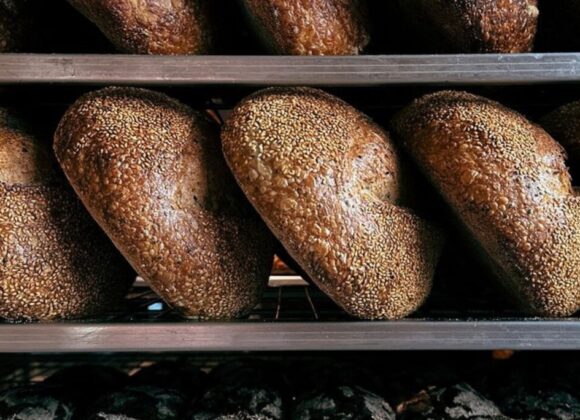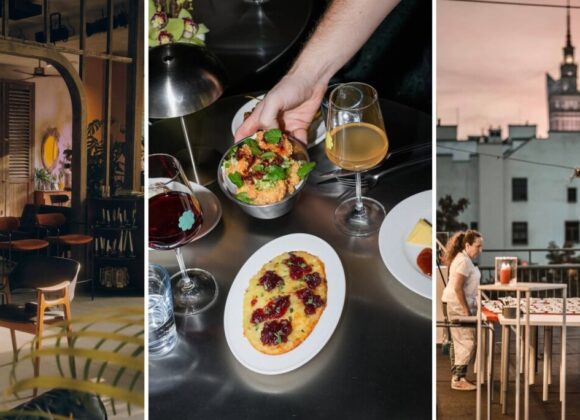Branża restauracyjna, tradycyjnie zakorzeniona w fizycznych i zmysłowych doświadczeniach, przechodzi znaczącą transformację napędzaną przez technologie cyfrowe. Zarówno w Polsce jak i za granicą była to jedna z branż, która usilnie stawiała opór zmianie.
Impulsem do cyfryzacji w branży restauracyjnej jest wiele czynników – od zmieniających się zachowań konsumentów, przez presję konkurencji, do bezprecedensowego wyzwania spowodowanego pandemią COVID-19. Współcześni konsumenci wymagają wygody, szybkości i spersonalizowanych doświadczeń, co zmusza restauracje do przyjmowania narzędzi i platform cyfrowych. Pandemia dodatkowo przyspieszyła ten trend, ponieważ lokale gastronomiczne musiały zmierzyć się z lockdownami i ograniczeniami, co sprawiło, że zamawianie online i usługi dostawy stały się nie tylko opcją, ale koniecznością.
Kluczowe trendy w cyfryzacji restauracji
Jednym z najbardziej zauważalnych zmian jest wzrost popularności platform do zamawiania jedzenia takich jak Glovo, Uber Eats i Pyszne.pl. Te platformy stały się integralną częścią ekosystemu restauracyjnego, oferując konsumentom wygodę dostawy do domu, a restauracjom dostęp do szerszej bazy klientów. Choć platformy dostawcze oferują znaczne korzyści, wiążą się również z wyzwaniami. Wysokie prowizje mogą zmniejszyć marże zysku, a zależność od tych platform może prowadzić do utraty bezpośrednich relacji z klientami. Restauracje powinny starannie oceniać koszty i korzyści korzystania z platform oraz konsekwentnie budować własny kanał sprzedaży online, a tam gdzie to możliwe oraz uzasadnione finansowo także system dostaw.
Integracja technologii w operacjach restauracyjnych powinna być tak oczywista, jak ciepła woda w kranie. Od systemów point-of-sale (POS) po oprogramowanie do zarządzania relacjami z klientami (CRM), technologia usprawnia każdy aspekt zarządzania restauracją. Aplikacje mobilne, systemy zamawiania online i bezdotykowe opcje płatności poprawiają doświadczenie klienta, podczas gdy narzędzia analizy danych dostarczają wglądu w preferencje konsumentów i efektywność operacyjną.
Narzędzia cyfrowe umożliwiają restauracjom oferowanie wysoce spersonalizowanych doświadczeń. Dzięki wykorzystaniu analizy danych, restauracje mogą dostosować swoje działania marketingowe i ofertę menu do indywidualnych preferencji. Programy lojalnościowe i ukierunkowane promocje stają się coraz bardziej zaawansowane, napędzane przez informacje zebrane z danych klientów, co owocnie można przełożyć na budowanie silniejszych relacji z klientami i poprawy ich ogólnego doświadczenia.
Do ciekawych trendów zaliczyć należy także wirtualne marki – koncepcji restauracyjnych, które istnieją tylko online, pozwalają właścicielom kuchni lepiej wykorzystać posiadane zasoby i stworzyć strumień, nowego rentownego przychodu.
Strategiczne podejścia do cyfrowej transformacji
Aby odnieść sukces w erze cyfrowej, operatorzy restauracji muszą przyjąć myślenie “digital-first”. Oznacza to uznanie znaczenia kanałów cyfrowych i priorytetowe ich włączenie do ogólnej strategii biznesowej. Restauracje powinny traktować cyfryzację nie tylko jako dodatek, ale jako kluczowy komponent swoich operacji. Ta zmiana myślenia jest kluczowa, aby pozostać konkurencyjnym na szybko ewoluującym rynku.
Inwestowanie w technologię jest krytycznym aspektem cyfrowej transformacji. W tym miejscu kluczowy jest jednak wybór odpowiednich narzędzi i platform, które są zgodne z celami i bazą klientów restauracji. Od solidnych systemów POS po zaawansowane oprogramowanie do zarządzania dostawami, odpowiednie inwestycje technologiczne mogą napędzać efektywność, obniżać koszty i poprawiać doświadczenie klienta. Ponadto ciągłe inwestowanie w technologię zapewnia, że restauracje pozostaną elastyczne i odporne na przyszłe zmiany.
Silna obecność online jest niezbędna do przyciągania i zatrzymywania klientów w erze cyfrowej. Obejmuje to utrzymanie zoptymalizowanej strony internetowej, angażowanie się na platformach społecznościowych i efektywne zarządzanie opiniami online. Skuteczne zaangażowanie online może wyróżnić restaurację na tle konkurencji i budować lojalną bazę klientów.
Dane są potężnym zasobem w erze cyfrowej, dostarczając cennych informacji na temat zachowań konsumentów i wydajności operacyjnej. Analizując dane z różnych źródeł — takich jak raporty sprzedaży, opinie klientów i metryki mediów społecznościowych — restauracje mogą podejmować świadome decyzje, które poprawiają efektywność i satysfakcję klientów.
Sztuczna inteligencja (AI) i automatyzacja są gotowe do zrewolucjonizowania różnych aspektów operacji restauracyjnych. Od chatbotów obsługujących zapytania klientów po zautomatyzowany sprzęt kuchenny, te technologie mogą poprawić efektywność, obniżyć koszty pracy i poprawić ogólne doświadczenie klienta. Sandland i Orsbourn przewidują, że personalizacja napędzana przez AI stanie się jeszcze bardziej zaawansowana, umożliwiając restauracjom oferowanie wysoce dostosowanych doświadczeń.
Balansowanie innowacji z tradycją
Cyfrowa transformacja nie powinna odbywać się kosztem tradycyjnych aspektów gastronomii, które klienci cenią. Warto do tematu podejść w sposób zrównoważony, który integruje narzędzia cyfrowe, zachowując jednocześnie unikalne cechy doświadczenia gastronomicznego. Na przykład, choć zamawianie online i dostawa są niezbędne, atmosfera i osobisty akcent doświadczenia stacjonarnego nie powinny być zaniedbane. Restauracje muszą znaleźć sposoby na połączenie najlepszych cech obu światów, aby stworzyć spójne i przyjemne doświadczenie dla klientów.
Historia uczy nas, że rewolucja zjada swoich ojców, dlatego pamiętajmy – cyfrowa transformacja powinna być ewolucją!










 Młodszy specjalista ds. komunikacji marketingowej i PR.
Młodszy specjalista ds. komunikacji marketingowej i PR.


 Absolwent Uniwersytetu Warszawskiego oraz Szkoły Głównej Gospodarstwa Wiejskiego. W branży HoReCa od ponad 10 lat. Przez lata związany z Grupą Trip, Sobienie Królewskie Golf and Country Club oraz restauracją Florentin w Warszawe.
Absolwent Uniwersytetu Warszawskiego oraz Szkoły Głównej Gospodarstwa Wiejskiego. W branży HoReCa od ponad 10 lat. Przez lata związany z Grupą Trip, Sobienie Królewskie Golf and Country Club oraz restauracją Florentin w Warszawe. Absolwentka Wydziału Architektury Politechniki Warszawskiej na kierunku Architecture for Society of Knowledge oraz Komunikacji Wizualnej na Politecnico di Milano. Specjalistka od budowania nastroju. Doświadczenie zdobywała w kraju i zagranicą podczas licznych warsztatów międzynarodowych (Sevilla, Lizbona, Florencja), stypendium na La Sapienza (Rzym) oraz pracując m.in. w Carmi e Ubertis i ADM Milano.
Absolwentka Wydziału Architektury Politechniki Warszawskiej na kierunku Architecture for Society of Knowledge oraz Komunikacji Wizualnej na Politecnico di Milano. Specjalistka od budowania nastroju. Doświadczenie zdobywała w kraju i zagranicą podczas licznych warsztatów międzynarodowych (Sevilla, Lizbona, Florencja), stypendium na La Sapienza (Rzym) oraz pracując m.in. w Carmi e Ubertis i ADM Milano.








 Menedżer z wieloletnim doświadczeniem w branżach kosmetycznej, spożywczej, dziecięcej. W trakcie swojej kariery związany z firmami takimi jak: L’Oreal, Samsung, Danone-Nutricia, Unilever. W ciągu swojego życia zawodowego odpowiadał między innymi za rozwój sprzedaży i contentu eCommerce w Polsce i krajach Europy Środkowo-Wschodniej.
Menedżer z wieloletnim doświadczeniem w branżach kosmetycznej, spożywczej, dziecięcej. W trakcie swojej kariery związany z firmami takimi jak: L’Oreal, Samsung, Danone-Nutricia, Unilever. W ciągu swojego życia zawodowego odpowiadał między innymi za rozwój sprzedaży i contentu eCommerce w Polsce i krajach Europy Środkowo-Wschodniej. 

























































